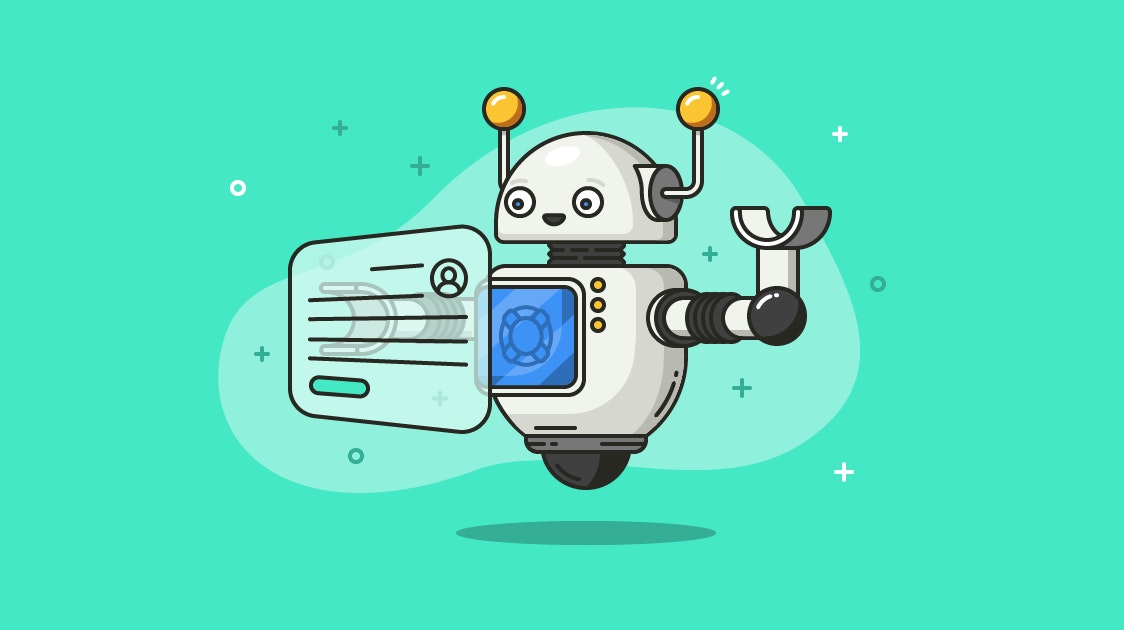If you ask me about the future of customer service, I’ll say it belongs to the companies who view customer support as a competitive advantage rather than a cost center.
In the Support Driven community, we recognize the emergence of customer support as a career, and we’re always thinking about ways we can do it better.
We asked a number of industry leaders about what they think is in store for the future of customer service; here’s what they told us.
1. Self-service, community-based service, and predictive support
Jay Baer, owner of Convince & Convert, says that there are "three things driving the future of customer support."
Self-service: Customers want to figure it out themselves, if they can do so without hassle or consequence.
Community-based service: Customers helping one another figure it out is going to continue as a trend.
Predictive support: This requires the innovative use of data, but providing “help” to customers before they know they need it is the holy grail of customer support, and it’s coming!
2. Personalization
Nick Francis, Co-founder and CEO at Help Scout, says that "As customer support tools get smarter, self-service is going to become a lot more relevant, helpful, and powerful. In most companies, this means many support professionals will spend more of their time doing proactive, success-oriented activities."
"When customers do end up talking with someone, the support team will have everything they need to be helpful in a personalized way: Account information, recent in-app activity, and probably a video of the most recent session where the customer ran into trouble."
"In addition, teams will get assistance from AI-powered suggestions, making it quicker than ever to provide a great experience."
3. Human-to-human connection
Camille E. Acey, VP of Customer Success at Clubhouse, says "I recently had the pleasure of meeting Dr. Taniya Mishra from Affectiva, a company that creates AI for understanding people’s emotions through their facial expressions, gestures, and tone of voice."
"While their efforts seem primarily focused on market research at the moment, I see a lot of potential for this sort of technology in customer support."
"Some support desks are indeed asking people to self-report their moods by selecting from a list or clicking on one a few rudimentary cartoon-faced images, but I think most would agree that tapping on a smiley face is a bit primitive and self-reporting can be wildly unreliable."
"If we are truly here to serve the customers, why are we asking them to jump through such annoying additional hoops? It is our job to gauge their mood and — provided they aren't being abusive to us — respond accordingly."
"Support is first and foremost about communication, and human communication has worked in much the same way for far longer than this 'new' digital age. We see a physical presence, we hear a voice, we see a face, we see gestures, and we respond in turn."
"While we as support professionals can benefit immensely from seeing words or images on a screen — especially when trying to tackle a particularly sticky technical challenge — nothing is better than seeing people, hearing the tone of their voice, and making a human connection."
"When we can’t be in the same physical space, we are going to have to find ways that our technology can truly bring us the next best thing: a visual experience, enhanced with biometric and behavioral data. The more we know and can glean, the better the user experience."
4. Rising customer expectations
Customer service consultant and speaker Micah Solomon believes that "the only customer service trend you need to be worried about is this: Consciously or unconsciously, customers continue to expect better and better customer service — in every industry, every niche, at every price point."
"These expectations don’t come out of the blue. Customers expect you to provide better customer service because they’re already getting better customer service elsewhere."
"Whether customer service has been improving in your particular competitive niche or not, it has improved over time at so many companies with such broad consumer reach, including Starbucks, Amazon, Apple, USAA Insurance, Trader Joe’s, and Publix, not to mention the great hotels and restaurants that serve so many of your customers every day."
After one of these companies comes into contact with a customer of yours — when USAA expertly assists in filing an insurance claim, or Amazon enables an effortless product return, or a genius at the Apple store debugs an iPhone issue with aplomb — it’s inevitable that your customer is going to expect friendlier, speedier, more intuitive service from your company as well."
5. Technology
Customer service speaker and author Shep Hyken says that "technology is playing a big part in the future of customer service."
"Social media allows customers to connect to companies using multiple channels. It also gives the customer a louder voice to be heard when they are happy or upset with the company."
"Self-service solutions are making it easy for customers to get answers to their questions quickly, and customers are embracing these options."
"AI is going to play a major role in customer service as 'the machine' interacts with customers for basic support issues and helps customer service reps provide better service by getting them the most accurate answers and information to share with their customers."
"Customer service is no longer what we view as traditional support. It’s part of sales, marketing, and the entire culture of an organization. It’s a competitive differentiator. It positively impacts both the customer’s and employee’s experience."
"It could be the difference between a company thriving or disappearing to competitive, customer-focused organizations."
6. Empathetic support professionals
Kristin Aardsma, Head of Customer Support at Basecamp, says that "we’re seeing a shift away from 'The Dreaded Customer Support Interaction' to 'The Hopeful Customer Support Interaction.'"
"Not to get too heady (or maybe exactly to get too heady), as millennials shape and promote identity politics, we as people are beginning to see each other more as unique individuals and less as faceless representatives or faceless customers."
"We are becoming free to talk about (and find) empathy and connection with strangers, partially because we grew up on the internet and don’t know a world without it. We can communicate with memes and jokes and cat GIFs to shape a customer’s day into sighs of relief instead of rage."
"Customer support professionals are becoming more empowered by their companies, which helps create trust and camaraderie among reps and customers. We’re pushing forward to better communication, better understanding of each other, and, ultimately, a better world."
7. Unification
Jamie Edwards, Co-founder at Kayako, believes "the future of customer service is unification and personalization: Bringing together everything we know about the customer to personalize the customer support experience."
"Customers leave a trail with all kinds of different services used by businesses, from Shopify to Twilio to Wistia. This makes the customer journey richer and more detailed than ever before, with thousands of signals indicating who they are, what they’ve seen, said, done… and the problems they’ve run into!"
"All of this information is ready to be used to intelligently personalize customer support. Whether that’s dynamically based on customer activity, smartly using AI systems to power bots and proactive suggestions, or to give superpowers to support teams, with more customer context, businesses will be able to create better customer experiences."
"There hasn’t been a more exciting time to be innovating in customer support!"
8. Machine learning + human support
Nancy A. Shenker, Founder and CEO at The On Switch, believes "intelligent machines are very quickly going to start taking over human functions, and this process is already in place with customer service."
"When a customer has a problem, 95% of the time the issue fits within a construct that a machine has seen before. If you look at the research, most consumers are actually okay dealing with a bot as long as they can get their problem solved quickly. It’s that 5% where human intervention is not just preferable, it’s required."
"Especially in the world of customer service, there is always going to need to be a 'bod behind the bot.' For example, if someone is looking for a bereavement fare, it’s unlikely that a robot will ever have the sensitivity training and compassion needed to handle such a difficult situation."
"When it comes to machine learning, there needs to be someone behind the data looking for trends and exceptions and teaching the machine to be more responsive."
"In the future, I see service people working hand-in-hand with machines. When an issue comes up that is not easily solved by the bot, it will immediately transfer to the intelligent human who can jump in without the customer waiting."
"If this technology is used correctly, I believe it can accelerate the speed with which a customer can have their problem solved. This is why I advocate that companies should invest in systems that aggregate customer data and allow support champions to treat each customer like the individual that they are."
9. Stronger brand relationships
Jeff Gardner, Director of Customer Support and Success at Intercom, recommends "imagining a world, in the not too distant future, where you are in control of your relationships with brands. No spammy emails, no faux-friendly live chat popups. Instead, you have the ability to share your information with the brands that you trust."
"You reach out to those brands with ease through a unified system that allows simple two-way communication. It’s always quick and pleasant because — based on all that data you’ve shared — smart recommendation engines, machine learning algorithms and, yes, bots, handle the vast majority of your questions instantaneously."
"These same artificial intelligences are also smart enough to know their limits and pass you to a person as soon as it’s clear you need more than they can provide."
"The people they connect you to are true experts on the products they support. And because they no longer have to mindlessly respond to the same simple questions over and over, they have ample time to guide you on how to get more from their products, not just how to use them."
"The net effect is a seamless transition between computer and person that allows both to focus on their strengths and ensures that you get the help you need in minutes rather than hours or days."
"Businesses love all of this because they get more data from their best customers, which in turn allows them to help turn more customers into their best customers. Because of this smart application of technology, they can employ smaller, but much more impactful customer teams."
"Many of these businesses have even stitched these customer teams directly into their R&D teams to ensure the feedback loop between customer and product is as tight as it possibly can be."
"If you’ve ever worked in a call center for a major corporation this probably sounds like science fiction. But I promise, it’s just around the corner for the best companies out there."
10. AI-powered self-service
Mike Murchison, CEO at Ada, says that "machine learning and artificial intelligence will power a new generation of self-service tools that will differ from the existing self-service experience in three important ways."
"First, customers will have far more control over the experience. Instead of having to read through FAQs, support articles, or community answers, customers will be able to ask for help in their own words — slang, emoji, and typos included! Furthermore, instead of being trapped in a frustrating decision tree, they’ll be able to freely and quickly move between topics."
"Second, the experience will shift from being static to dynamic. Instead of having to manually identify your biggest case-drivers, new self-service tools will alert your team of where and when it should be focusing its time. Additionally, the tools will learn from your customers’ activity and improve on their own, empowering your team to do more strategic and less monotonous work. "
"Third, the self-service experience of the future will substantially increase the percentage of your customer base that interacts with your business. Customers are more likely to engage with your company when friction is reduced and interacting with a person isn’t required. The resulting increase in customer data stands to have a dramatic impact on the role of support in your company."
"Ultimately, the majority of strategic company decisions in the future won’t be made without consulting data and insights collected by this new generation of self-service support tools and the control, dynamism and accessibility they afford customers."




